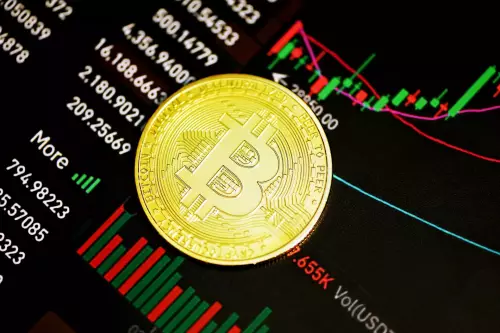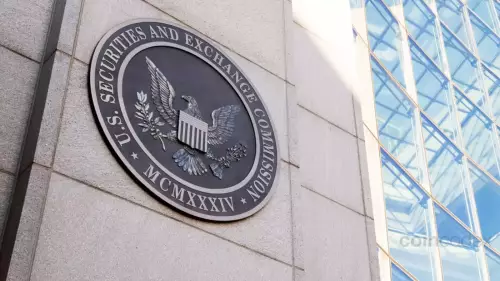 |
|
 |
|
 |
|
 |
|
 |
|
 |
|
 |
|
 |
|
 |
|
 |
|
 |
|
 |
|
 |
|
 |
|
 |
|
加密货币新闻
This week, the BTC market fluctuated at a high level, hovering in the price range of 93500-95500.
2025/05/06 18:04

This week, BTC market fluctuated at a high level, hovering in the price range of 93500-95500. Some altcoins such as SUI Ecosystem, Virtual Ecosystem and some AI tokens have seen impressive gains. The overall market is still waiting for key data such as unemployment rate and non-agricultural data this week to determine the direction.
In the interweaving of regulation and market manipulation, crypto market presents a complex picture. The ALPACA incident revealed that the market makers manipulated low-market-cap coin contracts, using short squeezes and funding rates to harvest retail investors, highlighting the speculative risks in the market. At the same time, the US policy vane supports crypto assets, and the passage of the Arizona Strategic Bitcoin Reserve Act marks the acceleration of the mainstreaming of cryptocurrencies.
1. ALPACA incident: market makers manipulated the market, and funds determined the rise and fall
Alpaca Finance is a decentralized finance (DeFi) protocol based on Binance Smart Chain (BSC), focusing on leveraged yield farming. On April 24, 2025, Binance issued an announcement that it would delist four tokens (ALPACA, PDA, WING, VIB), including Alpaca Finance (ALPACA), on May 2. Usually, delisting from an exchange will cause a sharp drop in token prices, as this is seen as a signal that the project has lost liquidity and recognition. However, ALPACA saw an abnormal 71% increase after the announcement, with the highest increase reaching 237%. The price doubled nearly 10 times in a week, soaring from about $0.02893 (the historical low on April 17) to a high point. Especially in the near-delisting period, there have been frequent instantaneous plunges and surges, which have been harvesting retail liquidity and have become the focus of the contract market.
We will not study the details of the incident, but discuss the current market situation reflected by the typical event of ALPACA.
Clarify the dealer's thinking
Based on Alpaca's price performance and recent widespread speculation, we can roughly understand the Alpaca market maker's trading ideas, which can be used as a reference:
1. Clear purpose:
The dealer's purpose is to profit by manipulating the market and raising the price of the Alpaca perpetual contract for delivery.
2. The first stage: Control the market and stabilize the price for delivery (before April 30)
At the beginning of the year, the dealer bought a large number of Alpaca coins at a low price, and used market orders to suppress the price and stabilize the price in the first stage of the market. After accumulating a certain amount of coins and stabilizing the price, the dealer began to raise the price slowly, and the market makers cooperated to stabilize the price at a high level.
3. The second stage: attracting the opponent (before 30 days)
In the second stage, the market maker focused on attracting short sellers. As the price rose, the market maker used a small amount of funds to quickly pull up the price, and then dumped a large amount of coins to lower the price, aiming to induce short sellers to enter the market at a high level. After the short sellers entered the market, the market maker would continue to pull up the price, causing the short sellers to fall into a state of deep loss and liquidation, thus providing more funds for the market maker to continue pulling up the price. This process formed a vicious circle, and the market maker's purpose was to use this method to absorb the remaining value in the market and quickly increase the price.
4. The third stage: the market crash after the contract delivery (April 30~May 2)
After the perpetual contract for delivery on April 30, the market maker began to dump a large amount of coins to lower the price rapidly, and then used market orders to buy back at a low price, aiming to consume the short sellers' remaining value and quickly reduce the market's attention to Alpaca. Finally, the market maker sold the remaining coins at a high price and withdrew from the market, leaving behind a rapidly cooling Alpaca coin.
To sum up in one sentence:
The market maker makes a profit by manipulating the market and raising the contract price for delivery, lures short sellers into selling and then raises the price again to complete the harvest. After delivery, the market maker dumps the market and clears the position to reap the remaining value.
Price trends and banker actions
▲
│ (After delivery)
│ ┌─▼─┐
│ │ Shipping │
│ └─┬─┘
│ ┌───────▲───────┐
│ │ Rapid pull-up to short position │ Phase 3
│ ┌─▼─┐ └───────┬───────┘ (4.30-5.2)
免责声明:info@kdj.com
所提供的信息并非交易建议。根据本文提供的信息进行的任何投资,kdj.com不承担任何责任。加密货币具有高波动性,强烈建议您深入研究后,谨慎投资!
如您认为本网站上使用的内容侵犯了您的版权,请立即联系我们(info@kdj.com),我们将及时删除。
-

-

-

-

- 比特币,加密和智商:当天才遇到数字黄金时?
- 2025-09-30 23:17:30
- 当Binance调整保证金交易和炒作面对投资者退出时,高级智商个人大胆的比特币举动引发了辩论。这对加密货币的未来意味着什么?
-

- Stablecoins,美国创新和钱包代币:下一个边界
- 2025-09-30 23:15:03
- 探索美国创新和诸如$ best的钱包令牌越来越受欢迎的美国的稳定币的兴起。
-

- 乌克兰的NBU,硬币和加密货币:纽约人
- 2025-09-30 23:14:07
- 探索有关乌克兰加密货币场景,NBU的纪念硬币和模因硬币的兴起的最新信息。这是一次疯狂的旅程,所以搭扣了!
-

-

-































































